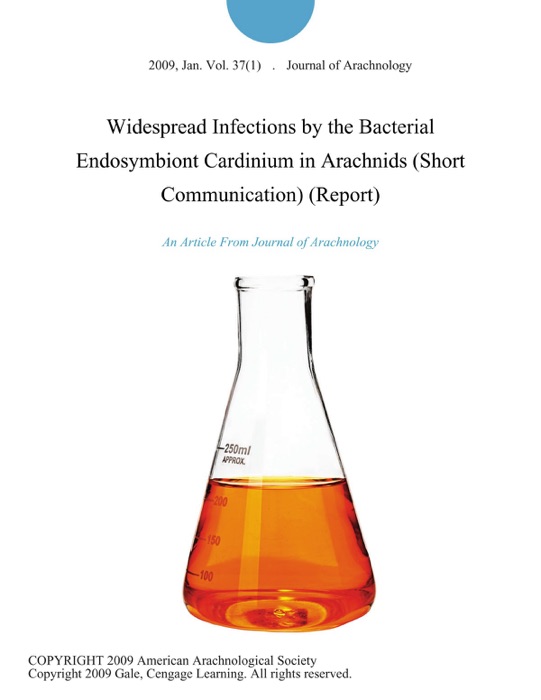[DOWNLOAD] "Widespread Infections by the Bacterial Endosymbiont Cardinium in Arachnids (Short Communication) (Report)" by Journal of Arachnology * eBook PDF Kindle ePub Free

eBook details
- Title: Widespread Infections by the Bacterial Endosymbiont Cardinium in Arachnids (Short Communication) (Report)
- Author : Journal of Arachnology
- Release Date : January 01, 2009
- Genre: Life Sciences,Books,Science & Nature,
- Pages : * pages
- Size : 182 KB
Description
Maternally inherited endosymbionts such as Wolbachia, Rickettsia, and Spiroplasma species are known to affect reproductive and behavioral traits of their predominantly arthropod hosts (see Charlat et al. 2003). Such infections are relatively widespread in insects and mites and recent evidence indicates that they are also found in both haplogyne and entelegyne spiders (Oh et al. 2000; Cordaux et al. 2001; Rowley et al. 2004; Goodacre et al. 2006). Incidences of multiple infections were also found to be common (Goodacre et al. 2006). Another endosymbiont, Cardinium, has been described more recently (Zchori-Fein et al. 2004). Cardinium is known to infect nematodes (Noel & Atibalentja 2006), insects (Provencher et al. 2005; Bigliardi et al. 2006; Marzorati et al. 2006) and mites (Chigira & Miura 2005; Groot & Breeuwer 2006). A recent study shows that it is also found in spiders (Duron et al. 2008), although its occurrence in other groups of arachnids has not yet been established. The effects of endosymbionts such as Wolbachia or Cardinium on their hosts can include skewing the sex ratio (SR) towards females (due to an increased male mortality rate, a feminization of males, or a resulting parthenogenesis) or cytoplasmiic incompatibility (Engelstadter et al. 2006) where uninfected individuals are at a reproductive disadvantage. The consequence of such infection has been studied in mites, but little research has focused on the arachnids as a whole despite the fact that various species or population traits such as distorted SR, parthenogenesis, and potential CI could potentially be explained by the presence of such microbes (see Table 1 for a summary of examples compiled from the literature; references supplied on request; see also Goodacre et al. 2006). These phenomena may have other well-founded explanations, but the possibility that they are the consequence of endosymbiont infections cannot be evaluated without testing for infections in such "hallmark" species.